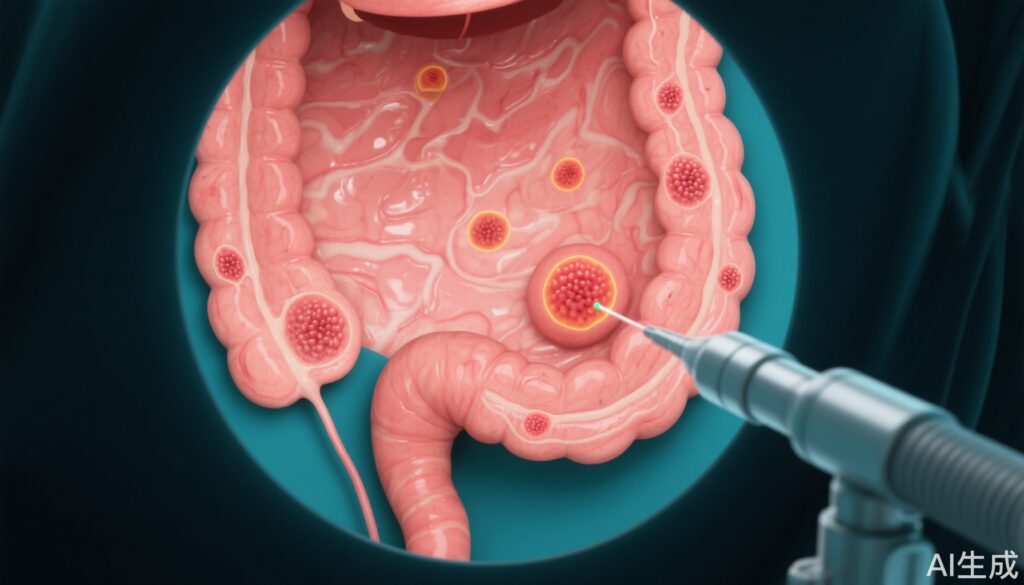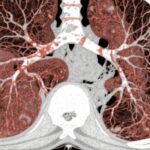Highlights
– Interval colorectal cancers (CRCs) after positive fecal immunochemical test (FIT) with negative colonoscopy show higher incidence and mortality than those after negative FIT.
– Hospital-level adenoma detection rate (ADR) inversely correlates with interval CRC incidence and mortality but paradoxically associates with worse CRC-specific survival in diagnosed cases.
– These findings suggest inherent biological aggressiveness of tumors in FIT-positive patients and a potential ceiling effect of current colonoscopic techniques.
Clinical Background and Disease Burden
Colorectal cancer (CRC) remains a leading cause of cancer morbidity and mortality worldwide. Screening programs employing fecal immunochemical tests (FIT) followed by colonoscopy for positive results have demonstrated reductions in CRC incidence and mortality. However, interval CRCs—cancers diagnosed after a negative screening result but before the next scheduled test—pose significant challenges. Interval CRCs may arise due to missed lesions, incomplete resection, or rapid tumor progression. Understanding the incidence, mortality, and survival outcomes of interval CRCs after different screening pathways is critical for optimizing screening strategies and improving patient prognoses.
Research Methodology
This cohort study analyzed data from the Taiwan CRC Screening Program involving participants aged 50 to 74 years who completed at least one FIT between January 1, 2004, and December 31, 2012. Two cohorts were defined: (1) individuals with a negative FIT result, and (2) individuals with a positive FIT result followed by a negative colonoscopy. Interval CRC cases were identified through linkage with the Taiwan Cancer Registry and Taiwan Death Registry up to December 31, 2019, allowing for long-term follow-up.
The study further stratified participants based on hospital-level adenoma detection rates (ADR): low (<40%), middle (40%-<65%), and high (≥65%). The primary outcomes were incidence of interval CRC, CRC-specific mortality, and long-term survival rates comparing post-FIT interval CRC and postcolonoscopy interval CRC.
Key Findings
Among 15,386 CRC cases identified in the program, 68.3% were screen-detected, while 26.2% were interval CRCs. Specifically, 18.1% were post-FIT interval CRCs (after negative FIT) and 8.1% postcolonoscopy interval CRCs (after positive FIT but negative colonoscopy).
Postcolonoscopy interval CRC incidence was significantly higher at 0.75 per 1000 person-years (95% CI, 0.71-0.79) compared to 0.09 per 1000 person-years (95% CI, 0.09-0.10) for post-FIT interval CRC (AHR 7.06; 95% CI, 6.35-7.57). Correspondingly, CRC-specific mortality was also higher after follow-up colonoscopy (0.12 vs 0.02 per 1000 person-years; AHR 5.04; 95% CI, 4.33-5.85).
Hospital-level ADR was inversely associated with interval CRC incidence and mortality. High-ADR hospitals had a 74% reduction in postcolonoscopy interval CRC incidence compared to low-ADR hospitals (AHR 0.26; 95% CI, 0.20-0.36) and a similar reduction in mortality (AHR 0.28; 95% CI, 0.19-0.41). Interestingly, among patients diagnosed with postcolonoscopy interval CRC, CRC-specific death was higher in high-ADR settings compared to low-ADR (AHR 1.89; 95% CI, 1.04-3.43), suggesting distinct tumor biology or detection nuances.
Mechanistic Insights and Biological Plausibility
The higher incidence and mortality of interval CRC after a positive FIT with negative colonoscopy indicate that these individuals harbor a higher underlying risk. This may reflect biologically aggressive tumors or lesions missed during colonoscopy despite high detection rates. The paradoxical worse survival in high-ADR settings might reflect a ceiling effect of current colonoscopic technology, where aggressive tumors evade detection, or procedural factors such as incomplete polypectomy or tumor biology leading to rapid progression.
Expert Commentary
This study underscores the complexity of CRC screening and interval cancer risk. Experts emphasize the importance of optimizing colonoscopy quality, including adenoma detection and complete resection, while also considering adjunctive technologies and risk stratification based on FIT results. The findings align with guidelines recommending enhanced surveillance and possibly novel biomarkers for high-risk individuals.
Controversies and Limitations
Limitations include potential residual confounding and generalizability restricted to the Taiwanese screening population. The study could not fully elucidate tumor molecular characteristics or procedural details influencing interval CRC development. Additionally, the paradoxical survival findings in high-ADR hospitals warrant further investigation to clarify underlying mechanisms.
Conclusion
This large cohort study demonstrates that interval CRC incidence and mortality are substantially higher among patients with a positive FIT followed by a negative colonoscopy compared to those with negative FIT results alone. Hospital adenoma detection rates inversely correlate with interval CRC incidence and mortality but not with survival after diagnosis, highlighting a possible procedural and biological interplay limiting current colonoscopic effectiveness. These results advocate for enhanced quality assurance, tailored surveillance strategies, and further research into tumor biology to reduce interval CRC burden.
References
Hsu WF, Ladabaum U, Su CW, et al. Interval Colorectal Cancers in a Fecal Immunochemical Test-Based Screening Program. JAMA Netw Open. 2025;8(7):e2523441. doi:10.1001/jamanetworkopen.2025.23441.
Levin TR, Corley DA, Jensen CD, et al. Effects of Organized Colorectal Cancer Screening on Cancer Incidence and Mortality in a Large Community-Based Population. Gastroenterology. 2018;155(5):1383-1391.e5. doi:10.1053/j.gastro.2018.07.014
Rex DK, Schoenfeld PS, Cohen J, et al. Quality indicators for colonoscopy. Gastrointest Endosc. 2015;81(1):31-53. doi:10.1016/j.gie.2014.07.059



